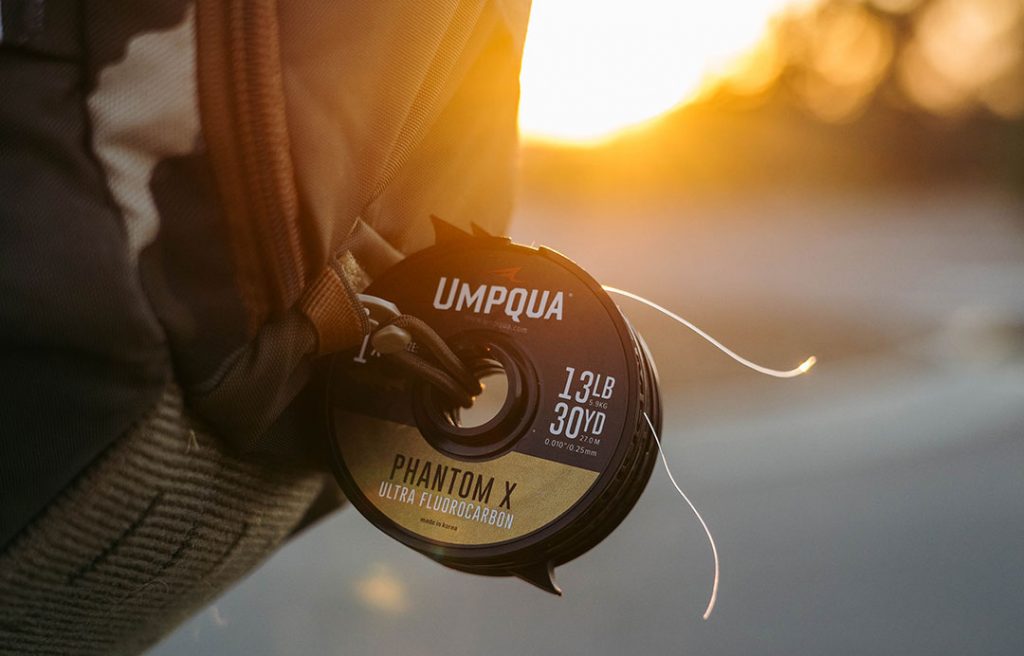
(By K. Deeter)
It used to be that tippet was judged pretty much with a pass-fail standard—either it broke or it didn’t. But these days, particularly in with the advent of new coatings and other technologies (one can legitimately argue that tippets, leaders and fly lines have seen the broadest technology-based leaps of any product category in the past decade or so) we can factor in a number of other things beyond mere tensile strength. Things like how light-reflective and visible tippets are… how stiff or supple they are… how easily knots are seated… long-term abrasion and durability… stretch, sensitivity, and so forth… are all factors now. Granted, most anglers are still just going to want a tippet that keeps their fly buttoned on, period. But the more advanced angler you are, and the more devoted you become to “presentation,” the more you realize all tippets aren’t alike and it’s worth mixing and matching—even spending an extra few bucks—depending on the situation you’re in.
I noodled around most of this past summer with a trio of tippets from Umpqua—the Perform X (nylon), Deceiver X (fluorocarbon), and Phantom X (ultra-fluorocarbon)—and I was able to notice enough of a difference that transformed over the course of a few months to being somewhat of a stickler when it comes to matching tippets with lines, flies, and certain fishing scenarios.
Perform X is my favorite of the three. It’s a $5 spool of nylon, which means it floats, and as such, it is my go-to dry-fly choice. (Because I like dry-fly fishing best, and I’m cheap, it stands to reason this would be my favorite.) I’ve always preferred mono over fluoro for dry fly fishing, not only because of the float factor, but also because I like a slight degree more suppleness, especially when I’m fishing smaller dries (like BWOs or Tricos) in glassy microcurrents where drag matters most. Perform X has a hydrophobic coating, which adds to buoyancy, but also enhances durability. A perfect real-life example of its toughness unfolded on my boat last weekend: We hooked a nice brown on a small CDC caddis late in the afternoon (we had used the same tippet all day, switching flies a few times)… first, the fish ran through the weeds and into the rocks… then it ran under the boat… the angler, who shall remain nameless (okay, it was my wife) got wrapped on the right oar… we got that unwound, but the fish ran back under the boat… she then wrapped on the left oar (that one was my fault)… we get that undone, and missed three successive stabs with the net (each solid smacks on the tippet)… and we still landed the fish. Of course at that moment, I chalked everything up to my superior knot-tying abilities, but in hindsight I have to believe the tippet material had something to do with it.
Deceiver X is the straight/original fluorocarbon version, costing $15 a (longer) spool, and it’s less visible to fish than nylon, a bit stiffer, a bit more sensitive in terms of feel, and also hydrophobic/abrasion resistant. In other words this is a great nymphing tippet. If you’re fishing the Euro style it’s best, but also great for the weighted nymph and bobber high-stick rig. I’ve also taken a real shine—precisely because the material doesn’t shine—to using the 0X (15-pound test) Deceiver X as a leader extension when I’m chasing larger, wary carp with flies. It’s pretty good for just about any streamer situation, trout or otherwise, but I really like this stuff for carp
Lastly, the Phantom X is an ultra-high-performance fluorocarbon, and with a price north of $20 for a spool, you don’t want to be peeling this stuff off in scads. What it seems custom-designed for, in my mind, however, is the dry-dropper rig. I’ll run the Perform X nylon to the dry, and then tie about 18-whatever inches of Phantom X off the hook shank, then fasten the dropper nymph to that. Phantom X is the most “invisible” of them all, primarily focused on smaller diameters, and the supple-stiff balance is such that seems perfectly suited for a dead-drifting presentation under a dry fly along the banks. It sinks right, drifts right, feels right, and fights right.
Does every angler need a dry-fly tippet, a nymphing/streamer tippet, and a dry-dropper tippet? Probably not. But I actually do believe being more selective about what tippet I used in which situations this summer helped me land more fish.


